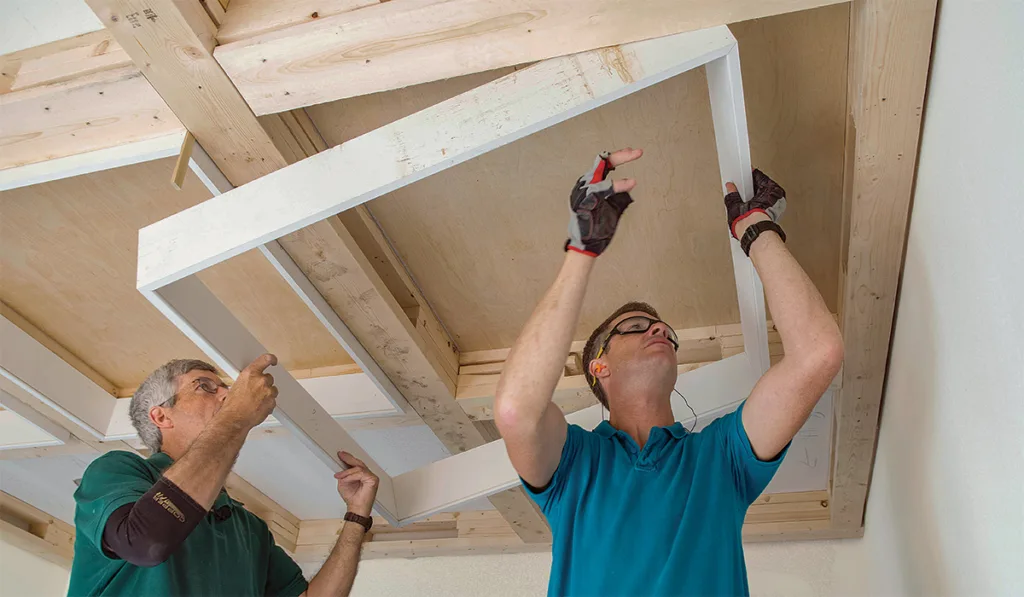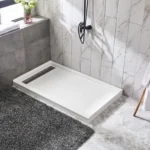Coffered ceiling designs have a long-standing reputation for infusing rooms with sophistication, balance, and visual interest. More than a decorative feature, the coffered ceiling is a testament to fine craftsmanship and architectural depth. Whether adorning a formal dining room or elevating a family living space, these recessed grids create an aura of charm and intention that can beautifully complement both traditional and modern interiors.
The term “coffered ceiling” refers to a ceiling that’s detailed with a pattern of hollowed-out square, rectangular, or even octagonal panels. These indentations are framed with trim or molding, producing a series of raised beams that cast shallow shadows and create a sense of architectural rhythm. The elegance lies not only in their geometry but in their versatility—making them ideal for a range of decor preferences beyond purely classical homes.
Why Homeowners Love Coffered Ceilings
There is something incredibly satisfying about looking up and seeing symmetry and purpose above your head. Coffered ceilings are often chosen for their:
- Textural depth: Flat, smooth ceilings often lack the dimensionality that makes a room feel rich. Coffering offers subtle layers that add complexity without overwhelming the senses.
- Acoustic benefits: The design can help soften sound reflection, making them ideal for spaces where acoustics matter, such as family rooms or study areas.
- Visual expansion: Despite their depth, coffered ceilings can ironically make a room feel taller, especially when combined with light paint colors and strategic lighting.
Where some ceilings are simply overhead, a coffered design practically becomes a part of the room's furniture—a silent, stately presence that roots the space in intention.
Choosing the Right Coffered Ceiling Style for Your Home
From rustic charm to urban elegance, coffered ceilings do not come in a one-size-fits-all formula. Let’s explore style variations that suit different home environments and design visions.
Traditional Coffered Ceilings
These often showcase deep wood tones, intricate crown moldings, and symmetry typical of neoclassical or colonial homes. Think dark walnut frames in square grids, drawing the eye toward central chandeliers or fireplaces. This style works particularly well in:
- Libraries
- Formal dining rooms
- Period-style entryways
Wood-paneled walls or French provincial furniture pieces can emphasize the traditional mood, bringing together warmth and heritage.
Modern and Minimalist Coffered Ceilings
Clean lines, shallow recesses, and painted finishes in shades of white or soft gray are central to contemporary interpretations. These ceilings often favor square or rectangular patterns with little or no ornate detailing.
Pair with microcement floors—a popular materials trend for monochrome interiors—for a sleek, seamless flow between ceiling and floor.
Rustic and Farmhouse-Inspired Coffered Ceilings
Reclaimed wood beams or faux-wood gridwork over snowy white ceilings add a sense of authenticity and coziness. They pair beautifully with Shaker-style cabinetry, woven area rugs, and country-style decor. This look thrives in:
- Open-concept kitchens
- Cottage-style living rooms
- Converted barn homes or modern Victorian renovations
Even integrating beamed ceiling ideas from similar rustic aesthetics can help create visually consistent interior themes.
Coastal and Mediterranean Coffered Designs
Some homeowners opt for a more breezy, nautical approach—with lighter woods like ash or pine, wider spacing between coffers, and sky-blue paint or natural plaster inside the panels. This mood suits waterfront homes and spaces with lots of daylight. Adding elements like limewash walls can evoke a sun-worn, seaside ambiance.
Best Rooms for Coffered Ceilings
While every room in a home can benefit from intentional ceiling design, certain spaces particularly lend themselves to the coffered look:
Living Rooms and Family Rooms
Coffered ceilings add layers of coziness in shared spaces where families gather. They work best in rooms with at least nine-foot ceilings to allow enough height for the grid pattern to shine without oppression. Integrating recessed lighting within each coffer boosts ambient light while letting the architectural details remain uninterrupted.
Dining Rooms
Nothing frames a chandelier quite like a square coffered recess around it. The ceiling subtly directs the focus to the dining table and enhances a space meant for hospitality and connection.
Bedrooms
A softer, shallower coffer in a painted finish can give master bedrooms a relaxed yet sophisticated tone. Add texture to further personalize the space by weaving in fluted glass accents on pendant lighting or wardrobe doors.
Bathrooms
Thanks to moisture-resistant materials, bathroom ceilings can benefit from modest versions of coffer designs, especially in larger primary baths. If you're renovating, be sure to review how much to renovate a bathroom to work coffered detailing into your budget and timeline.
Materials Matter: Choosing the Right Elements
While traditional wood remains a go-to choice, it is far from your only option. Depending on your home’s needs and climate, materials used for installing coffered ceilings may include:
- Solid wood: Offers authenticity and visual weight. Ideal for larger rooms and heritage homes.
- MDF or PVC: Easier on the budget, paint-ready, and lower in maintenance—commonly used in newer construction or areas with humidity fluctuations.
- Gypsum-based molding: Used for very ornate or classical styles but heavier and more labor-intensive to install.
Adding warmth through natural tones or choosing painted surfaces based on the overall color scheme of your room will help integrate the ceiling into the design seamlessly.
Challenges to Consider Before Installing a Coffered Ceiling
Coffered ceilings are showstoppers, but they require intentional planning. A few challenges may arise:
- Ceiling height: This design typically subtracts a few inches from the ceiling due to its recessed pattern. For rooms with eight-foot ceilings or lower, a modified or 2D illusion grid might be preferable.
- Cost: Depending on the size of the room, intricacy of the grid, and materials used, installation costs can vary widely. DIY templates exist, but for most, professional design and installation deliver the cleanest results.
- Weight and support: Especially for solid wood designs, assessing ceiling joists and stud structure is vital to ensure safety and integrity.
- Integration of lighting and HVAC: Recessed lighting must be planned in alignment with the coffer grid. Ventilation systems may also need redirection or modification.
Styling Your Coffered Ceiling for Detailed Impact
Once installed, your coffered ceiling becomes the upward focal point of the space. Here are ways to highlight its beauty:
- Contrasting colors: Paint the recessed panels and frame moldings in different but complementary shades. Consider soft ivory paired with warm greige for subtle elegance.
- Add crown molding: A detailed crown around the room's perimeter further ties coffered ceilings into the broader architectural scheme of a space.
- Install pendant or chandelier lighting within coffers: This is ideal for dining and sitting areas where focal illumination is desired.
- Wallpaper inside coffers: For a statement ceiling, lining each recess with patterned wallpaper gives playful vibrancy or classical boldness.
Pair these touches with accessories such as vintage rugs, tufted upholstery, or elegantly arranged mirrors to carry the ceiling’s refinement throughout the room.
Final Thoughts
A coffered ceiling is more than an architectural adornment—it’s a meaningful detail that contributes volume, charm, and structure to any interior. When thoughtfully applied, it transforms overhead space into a curated part of your home’s narrative. Whether through minimalist grids in contemporary homes or rich wooden beams nodding to historical design, coffered ceilings offer timeless appeal grounded in craftsmanship.
For homeowners seeking strong visual texture, acoustics, and a sense of elevated architecture, few options resonate like the coffered ceiling. With options tailored to suit any interior vision—from rustic and practical to classic and ornate—this timeless ceiling design continues to win hearts across the United States.

